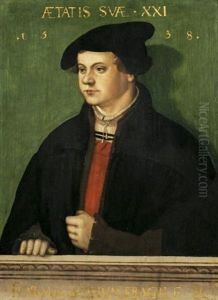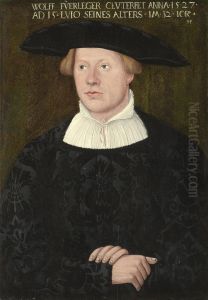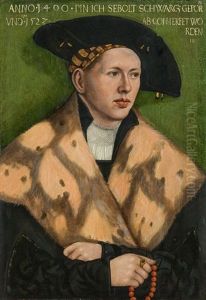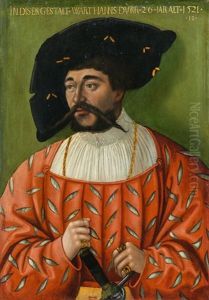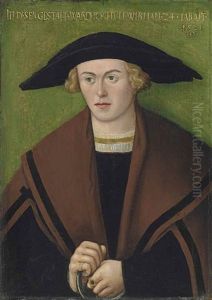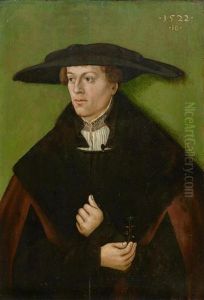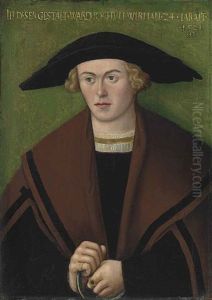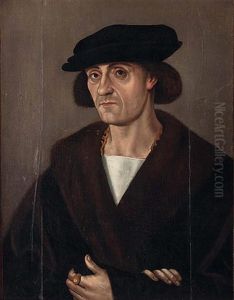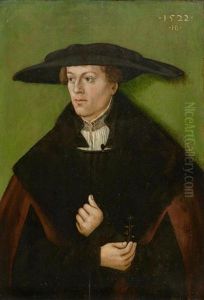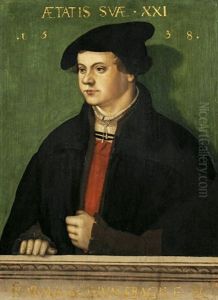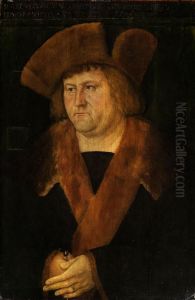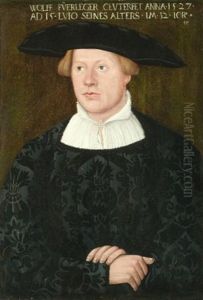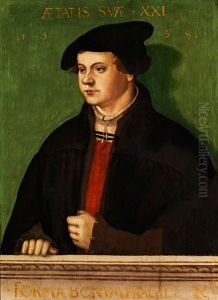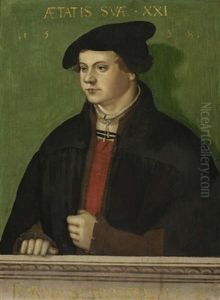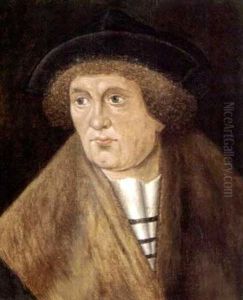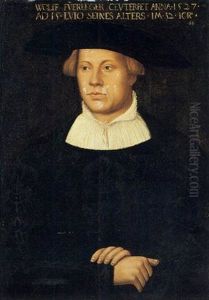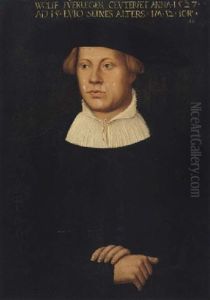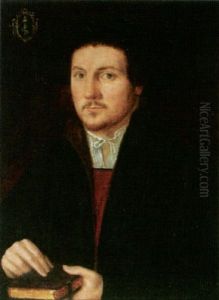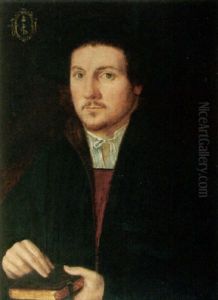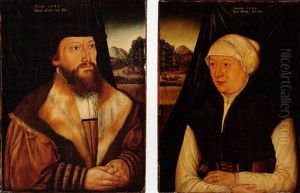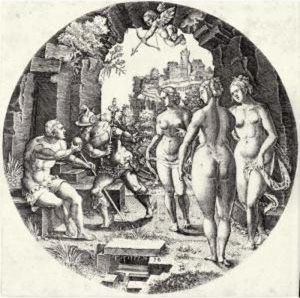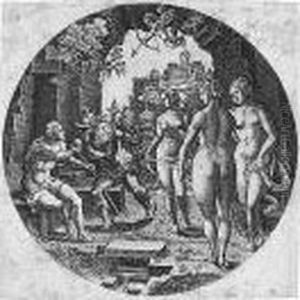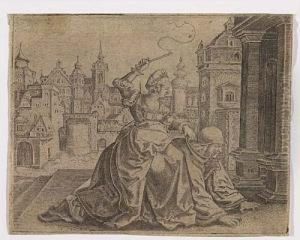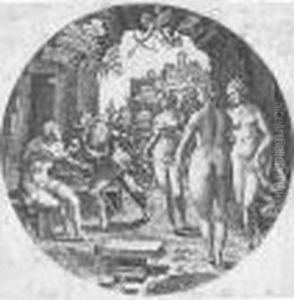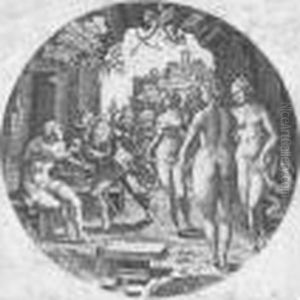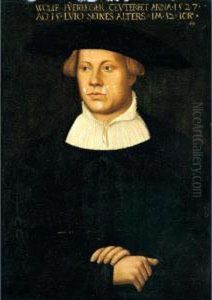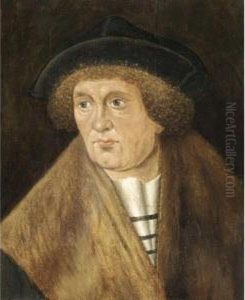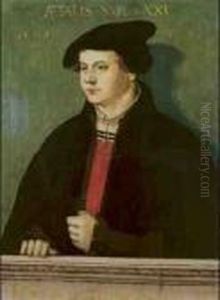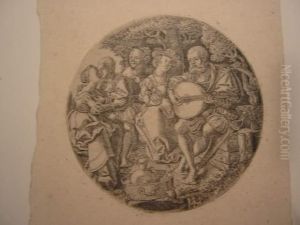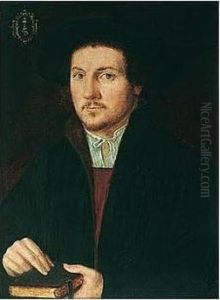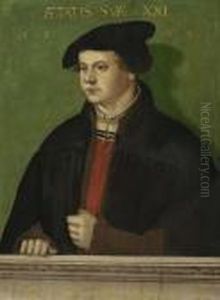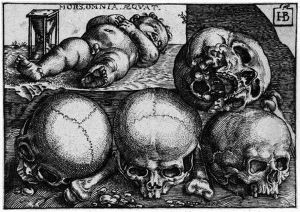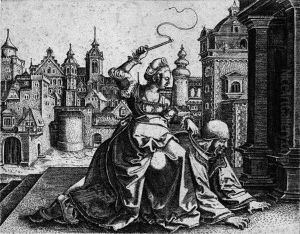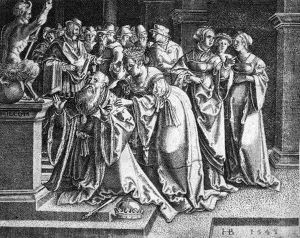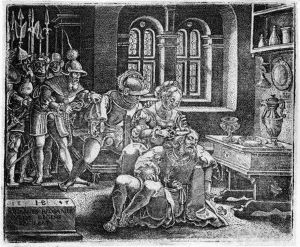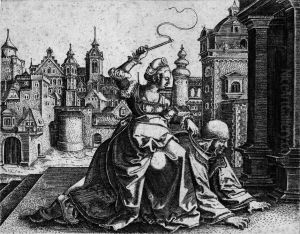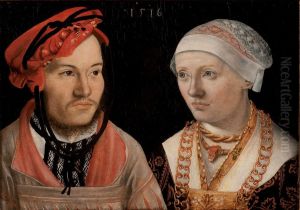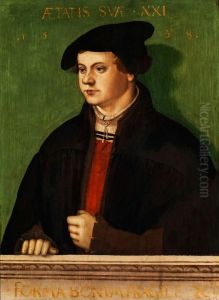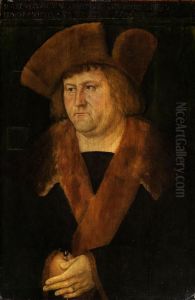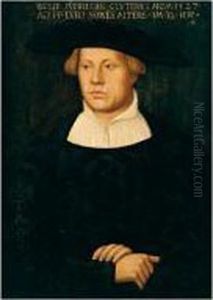Hans Brosamer Paintings
Hans Brosamer was a German painter and engraver whose career flourished during the Renaissance period. Born around 1500, possibly in Fulda, Germany, Brosamer is known for his contributions to the Northern Renaissance and for his woodcut prints. Little is known about his early life and training, but it is believed he may have been a pupil of Hans Holbein the Elder in Augsburg or perhaps influenced by the works of Albrecht Dürer.
Brosamer's works consist mainly of portraits and religious subjects. His engravings and woodcuts are characterized by their detailed and precise lines, reflecting the technical qualities typical of the period. He is often recognized for his skill in capturing the details of contemporary fashion, which makes his portraits valuable resources for studying the clothing of the 16th century.
Around 1525, Brosamer moved to Erfurt, where he produced numerous portraits and altarpieces. One of his significant contributions was a series of woodcuts for the Luther Bible, which exemplifies the collaboration between art and the Reformation movement. His works during this time reflect the influence of Martin Luther's teachings and the changing religious climate in Germany.
Later in his career, Hans Brosamer worked in Hesse, where he continued to create portraits and religious works. Despite his prolific output, Brosamer did not achieve the same level of fame as some of his contemporaries. Nevertheless, his engravings and woodcuts remain an important part of the art historical record, particularly for their depiction of 16th-century German life and fashion.
Hans Brosamer's death is recorded in 1554, and he is often remembered as a master engraver and painter whose works provide insight into the Northern Renaissance. His legacy is preserved through his contributions to religious and portrait artistry, and his prints continue to be studied for their technical proficiency and historical value.
